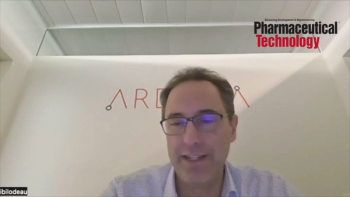
Interfering with Interventions in Aseptic Processing
Key Takeaways
- Aseptic processing improvements aim to reduce contamination from operators, yet interventions remain necessary, increasing contamination risk.
- 'Inherent' and 'corrective' interventions are distinguished, with efforts to minimize corrective interventions through risk assessments and process simplification.
Addressing human interventions to reduce their impact on contamination requires addressing broader considerations than limiting operator activities. Equipment, automation, procedural and component changes can be utilized to make the aseptic activities safer. This article offers suggestions for reducing the adverse impact of intervention throughout the aseptic process.
Since the beginnings of aseptic processing, personnel participating in the process were recognized as a major source of contamination. Most of the improvements can be linked to the desire to mitigate the negative consequences of the operator’s presence. Remotely operable filling machines, automated component delivery, aseptic gowning upgrades, unidirectional air, substantially increased physical separation, and more have helped improve the performance of the aseptic process. In most systems, including many of the more advanced designs of restricted access barriers (RABs) and isolators, the operator plays an essential role amidst the many supportive elements needed. The potential for contamination ingress and dispersion is exacerbated by the activities the operator is needed to perform. This situation persists because “ … the perfect intervention is the one that is not required” (1,2).
The author initially used the terms ‘routine’ and ‘non-routine’ to distinguish between those activities that are required as part of the process and those that would be needed to rectify the occasional failure. The need to reduce the incidence rate of interventions was included, with the primary focus expected to be on the ‘non-routine’ activities, as their elimination should be the goal in every aseptic process. Unfortunately, multiple firms have tolerated extensive ‘non-routine” interventions to correct repetitive faults in their operations as ‘routine’ because they happened frequently. That was completely contrary to the intent and was addressed in a subsequent publication where the now prevalent terms of ‘inherent’ and ‘corrective’ were introduced (3). Inherent interventions are those operator manipulations necessary to initially prepare the equipment and maintain operation throughout its execution. In an ideal world, no other operator activity would be needed in the critical environment. Corrective interventions would address the actions needed to return the line to operation after a fault or stoppage. This terminology is now generally accepted, but the desired goal is still somewhat distant.
Recommendations for detailed descriptions of each intervention included in operating procedures accompanied with still images, video, and hands-on training were recommended to ensure uniformity of execution and adherence to best practices. These would be employed to support media fill execution and improved consistency in daily execution. Later publications endeavored to make further distinctions in corrective interventions (4,5). The simpler corrective interventions require removal of jammed or broken items, adjustments to equipment, and similar tasks which are typically short duration. A new term was added, ‘critical corrective’, to describe interventions that entail the replacement of sterilized product contact equipment that often require increased manipulation and longer time. While ‘critical corrective’ interventions are common at some firms, consideration should be given to their elimination by ceasing production when these are encountered rather than accept the added risk associated with their execution.
In parallel with these intervention focused publications, James Akers and the author have published on aseptic processing risk assessment that focused on interventional activity (6,7,8). The initial risk assessments published in 2005–2006 arbitrarily assigned greater risk to ‘corrective’ interventions relative to ‘inherent interventions.’ The authors also used a linear scale for potential contamination dispersion. After working with multiple clients applying the method in a variety of different settings, it was revised substantially in 2017. Rather than an arbitrary categorization, the authors shifted to a time-based risk factor for interventions within the critical zone. This resulted in a major shift as a ‘corrective intervention’ of three seconds duration should be considered less risky than an ‘inherent intervention’ requiring 45 seconds to complete. The simple removal of a downed vial would thus be considered less risky than the lengthy addition of stoppers to a feed hopper. The other major change was changing the ‘proximity’ factor from linear to an ‘inverse-square’ approach, thereby eliminating an arbitrary (and hence potentially misleading) metric in the method. The recommendations included within this publication were made with the 2017 revision to the A-A risk method in mind.
An outline for action
The publications summarized above only go so far. Redefinition of terms and refinement of risk evaluation methodology only point the general direction to take as they do not detail the specific actions needed. To establish those, it’s useful to consider the “perfect intervention” objective somewhat differently. It could be restated as—as it is not possible to perform an intervention without adding to the risk of contamination ingress, every effort should be made to eliminate interventions entirely in aseptic processing. If they cannot be completely eliminated, they need to be made simpler and/or less frequent.
Some basic principles for reduction in intervention and contamination risk can be used to guide the practitioner (see Table I).
Strategies to tactics–inherent interventions
Inherent interventions may not appear to provide opportunities for reducing the contamination risk, because the necessary activities are explicitly required in operating procedures or manufacturing/filling records. This presupposes that those activities have already embraced the goal of minimizing operator interaction with sterile materials. In the author’s experience, the guiding principles are rarely considered sufficiently. The following real-life examples are unfortunately typical:
- In reviewing the sterilization validation for an aseptic filling system there were more than 60 separate pieces of the filling manifold being individually wrapped and sterilized. The firm indicated that these would be aseptically assembled after sterilization to avoid difficulties with steam sterilization equilibration time. A custom-fabricated replacement was substituted and sterilized as a single item.
- In the final stages of making a small-scale sterile suspension, a sample was taken immediately after transfer from the mixing vessel to the dilution vessel. Leaving a sample size amount in the mixing vessel eliminated the sampling intervention in the materials to be further processed.
- Following the subdivision of a sterile powder blend into sterile containers in a closed system, samples were aseptically taken from selected containers. Introduction of sample size containers fillable using the closed system eliminated exposing materials intended for filling.
- After automatic loading of a lyophilizer through a “pizza-door”, the entire door would be opened to place thermocouples in containers on each shelf. The process would be reversed at the completion of the process to remove the thermocouples before unloading. Awareness that the process was not controlled or adjusted in any way due to the thermocouples in the containers resulted in their removal after completion of lyophilization process validation.
It is important to look at the aseptic process holistically to lessen process vulnerabilities. This may entail changes at the detailed level, including equipment configurations, sequence of activities, sampling requirements, and more. An activity or configuration that might be entirely satisfactory from a process perspective may include easily avoidable microbial contamination risks that can be reduced or eliminated.
Tactics for equipment setup. To the casual observer, the aseptic process begins when formulated sterile product and components are first exposed within the critical environment. The preparation of equipment for use within the aseptic environment is the true starting point. This can require direct contact with sterilized items very differently from what is necessary during the aseptic process itself. Adherence to core aseptic technique principles such as ‘first air’, ‘slow and deliberate’ movement, avoidance of direct contact, etc. can be difficult given the unique nature of the manipulations. Useful tactics for aseptic set-up include the following:
- To the maximum extent possible, product contact equipment should be pre-assembled prior to sterilization. Alternatively, a one-piece custom fabrication could replace multiple individual pieces. Sterilization processes can be adapted as necessary.
- A pre-sterilized single-use disposable system can replace complex piping configurations. This is increasingly commonplace. It introduces other factors for consideration such as material compatibility, system integrity, etc., but the elimination of numerous set-up interventions is clearly advantageous.
- Sterilization in-situ of the filling parts after assembly eliminating remote sterilization and aseptic assembly.
- Components for the set-up should be prepared and sterilized separately (and cleared from the line prior to the start of the fill) from those used for the process to avoid exposing components for extended time periods.
- Process equipment, especially that intended for aseptic filling and sealing, should be selected for ease of set-up and preferably remote adjustment, initially and during use.
- Sterilizing filters that are included in the set-up should be integrity tested prior to sterilization. The availability of confirming validation on filter integrity following sterilization avoids uncertainties that have resulted in requests for PUPSIT (Pre-Use Post-Sterilization Integrity Tests) as a routine requirement.
- Use of filling machines able to remotely adjust for fill weight, container height, rail spacing, and other parameters to allow for minimal interventions for product, fill, and container changeover.
Tactics for aseptic filling/processing inherent activities. The aseptic process is the focus of attention as interventional activities can be frequent during its execution. Inherent activities for aseptic filling processes are either material handling or monitoring related, such as:
- Component introduction linked to the speed of filling/processing, and items sterilized in sealed containers are introduced as needed.
- The use of larger component containers to reduce the frequency of interventions.
- The repetitive actions associated with component addition make them well suited to the use of robotics.
- Robots and automation are also effective in the transfer of containers to/from and, loading/unloading of lyophilizers.
- Rather than an arbitrary time interval as the basis for weight checks, define the interval based upon filling system performance which can allow for a longer-periods without sampling.
- The use of robotics for sampling throughout the aseptic process.
- Remote monitoring and adjustment of fill weights eliminating interventions. An investment in newer, more sophisticated, and safer equipment is needed.
- Elimination of thermocouples from product containers within lyophilizers.
- Less frequent environmental monitoring based upon operational trends.
- Elimination of sample points remote from operator activity due to their limited utility.
- Elimination of mid-process monitoring of personnel as an avoidable and overly risky intervention.
- The use of passive (settle plates) rather than active air samples to eliminate the more difficult interventions needed for loading and unloading of active air samplers.
- The selection of viable monitoring systems that simplify the introduction and removal of test samples.
- Greater emphasis on post-process surface and personnel monitoring to avoid interventional activity mid-process in the critical environment.
Strategies to tactics for corrective interventions. There should be no tolerance for corrective interventions in aseptic processing. Their continued presence reflects a willingness to accept the consequences of defects in a variety of areas: process design, equipment selection, component cost, and operating procedures. While not all corrective interventions are difficult to perform or time-consuming to execute, they each represent avoidable faults in the process. Measures to prevent their reoccurrence should be taken to eliminate the need for the interventional activity. The following real-life examples are representative of the problems they present, and potential for their elimination and remediation:
- Shortly after successful factory acceptance testing (FAT) and site acceptance testing (SAT), and initial media fills without adverse incident and meeting all requirements, the firm experienced serious problems with vial stoppering with frequent broken containers requiring line clearances. Investigation in conjunction with the equipment supplier revealed that the firm used vials of the same configuration with less restrictive acceptable quality levels (AQLs) on vial dimensions concurrent with the start of production with the expectation that it would have no adverse impact. Reverting to the equipment manufacturer’s more restrictive AQLs for the vials quickly resolved the problem.
- Media fills for lyophilized vials on a multi-use line resulted in multiple contaminated units. Solution fills with the same vial were consistently free of any positives. Review of the lyophilization media fill video revealed frequent operator interventions into the stopper bowl to remove clumps of stoppers. Corrections to the stopper preparation and sterilization processes eliminated both the clumping and the subsequent corrective operator intervention.
- During media fills performed as part of the validation of a substantially modified filling line, the firm was unable to successfully perform stopper bowl replacement without contamination. In reviewing their operational history, the firm realized that that intervention had only been required once in the previous eight years of operation. It was decided that eliminating the intervention entirely and re-starting with a fresh set-up in the event a mid-process replacement was necessary, was more appropriate.
The examples included two distinct types of corrective interventions. The easiest corrective interventions to perform are those that entail removal of an object or adjustment of an already installed piece of equipment. These are generally easy to perform and are ordinarily of comparatively brief duration. The more challenging are more complex entailing replacement of a sterilized equipment item that is a part of the initial set-up (e.g., a filling needle, stopper bowl, etc.) should be considered critical correctives and are generally more complicated and of longer duration
Tactics for aseptic filling/processing corrective activities. Ideally an aseptic process can be completed without requiring a corrective intervention. This should be the goal for all processes; regrettably, it is only rarely achievable. Firms should collect data on their corrective intervention experience and use the data constructively to identify means for reducing their frequency. Some ofthe more frequently encountered corrective interventions include:
- Stopper misfeeds or clumping can be a consequence of hidden variations in their preparation and sterilization processes.
- The use of more restrictive AQLs for component dimension/configuration can reduce the rate of misfeeds, jams, breakage, etc.
- The use of neck-hold vial handling avoids misalignment of the closure with container seal surfaces as well as elimination of container mis-feeds at conveyor transitions. This can also serve to reduce spillage.
- Equipment set-up that is more automated/reproducible can result in better performance during the fill.
- Remote adjustment of conveyor rails, fill needle height, and other equipment provides for less invasive adjustment and more precision in set-up and vial change-over.
- Equipment designs that accommodate self-clearance for mis-fed components can eliminate their manual removal.
- Relocation of controls, and adjustment locations outside the critical zone.
Tactics for aseptic filling/processing critical corrective activities. The invasive nature of critical corrective activities coupled with the time required for their execution should make these a rare occurrence in any operation. The contamination risk from these activities is substantially greater than that associated with inherent or ordinary corrective interventions. Tolerance for their routine execution in any process or line should be extremely limited. The more common critical correctives include product filter change, filling needle replacement; fill-pump replacement; and stopper bowl changes. The execution of these may entail significant human manipulation within the critical zone and, while certainly possible, may present extraordinary contamination risks. As such, they should be closely scrutinized to ensure they should be maintained as a continued practice. The contamination potential from these due to the product contact nature, proximity and execution time is greatest, and their elimination is highly recommended.
Interventions to avoid
The attention focused by regulators on aseptic processing activities brought attention to all of the interventional activities performed on a filling line. Firms were asked to include interventions in process simulations to support their ability to execute them with contamination ingress. In their eagerness to be compliant, some firms identified activities that fall outside the realm of aseptic processing. There are several categories of these:
- Operator activity outside the critical zone that does not involve aseptic handling of exposed sterile materials or equipment. These have no impact on the aseptic process and need not be included in a firm’s media fill program.
- An activity that compromises the integrity or performance of the system or air supply to the critical zone should be understood as unacceptable during an aseptic process. It should result in immediate cessation of operation, and rejection of all exposed sterile items. There is no defendable rationale for continuing aseptic operations when interventions that interfere with the system’s primary protection (e.g., barriers, gloves, partitions, etc.) occur.
- Any intervention that cannot be performed with proper aseptic technique while maintaining the critical environment within the required limits should not be tolerated.
The devil is in the details
The aseptic operator is universally recognized as the primary source of microbial contamination in the critical environment (9). There is also definitive evidence that increased activity levels result in increases in viable and non-viable particles (10,11). This supports the original premise that there are no truly safe interventions with respect to aseptic processing regardless of the underlying aseptic technology (1,2). Nevertheless, as system perfection is still an elusive goal in manned aseptic processing and system automation is not universal, there will be instances where operators will be required to manipulate sterile items in either preparation for or during the aseptic process. It behooves the firm to review every expected interventional activity regardless of type in detail to identify the preferred process for its execution. Adherence to good aseptic technique is required and review by an experienced microbiologist is recommended. Once the intervention is defined, it should be well documented and used as the basis for operator training. Documentation should incorporate written instructions, drawings, still and video images detailing the practice in detail such that all operators can execute it in a near identical manner. Confirmation of acceptability should be confirmed by incorporation within the media fill program at a frequency that meets or exceeds its use in routine production.
Conclusion
There are two guiding principles to adhere to for the improvement of intervention practices in aseptic processing:
- A useful principle to follow to is to make every intervention as simple as possible to execute such that all operators can successfully execute it at all times. This holds true regardless of whether the operators are highly proficient or new to the job. Extraordinary skill should never be necessary to execute any intervention. The objective should be to make any intervention so safe to perform that the operator can perform it on their worst day.
- Just because an intervention can be done doesn’t mean that it should. Interventions always increase the risk of contamination ingress. Whether they are corrective or inherent, firms should be committed to their eventual elimination. The pursuit of the “perfect intervention” should be continuous in all aseptic operations.
References
- Agalloco, J. Management of Aseptic Interventions. Pharmaceutical Technology, 2005 29, (3), p. 56-66.
- Agalloco, J.; Akers, J. The Truth about Interventions in Aseptic Processing. Pharmaceutical Technology, 2007 31 (5) p. S8-11.
- Agalloco, J.; Akers, J. Revisiting Interventions in Aseptic Processing. Pharmaceutical Technology, 2011 35 (4) pp 69-72.
- Agalloco, J. Uncommon Sense in Execution of Process Simulations. Pharmaceutical Manufacturing, 2013 10 (3), pp 28-32.
- Agalloco. J. Complications in Process Simulation Execution. Pharmaceutical Technology, Biologics and Sterile Drug Manufacturing Supplement, 2020 43 pp. 10-14.
- Agalloco, J.; Akers, J. Risk Analysis for Aseptic Processing: The Akers-Agalloco Method. Pharmaceutical Technology, 2005 29 (11), p. 74-88..
- Agalloco, J.; Akers, J. The Simplified Akers-Agalloco Method for Aseptic Processing Risk Analysis. Pharmaceutical Technology, 2006 30 (7) p. 60-76.
- Agalloco, J.; Akers, J. A Revised Aseptic Risk Assessment and Mitigation Methodology. Pharmaceutical Technology, 2017 41 (11), pp. 32-39.
- Avallone, H. Current Regulatory Issues Regarding Parenteral Inspections. Journal of Parenteral Science & Technology, 1989 43 (1), pp. 3-7.
- Whyte, W. Cleanroom Design, 2nd Edition, John Wiley & Sons, Chichester, 1999
- Ljundvist, B. and Rheinmuller, B. Modern Cleanroom Clothing Systems: People as a Contamination Source. PDA Journal of Pharmaceutical Science & Technology, 2003 57 (2), pp. 114-125.
About the author
James Agalloco, Agalloco & Associates
Newsletter
Get the essential updates shaping the future of pharma manufacturing and compliance—subscribe today to Pharmaceutical Technology and never miss a breakthrough.




